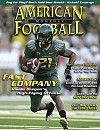Article CategoriesAFM Magazine
|
Misdirection: Using Pre-Snap Movement and Multiple Personnel Groupings to Gain an Offensive Advantageby: Steve CanterQuarterbacks Coach Norfolk State University © More from this issue Mike Martz is one of the more productive offensive coaches in the National Football League. He has utilized pre-snap movements for years and during many of those seasons he has gained a competitive advantage. As an offense, we want to create the illusion of being very complex while we are, in fact, being simple and basic. We accomplish this through using a variety of movements and personnel groupings. By minimizing the number of basic concepts, creating a large number of ways to run each concept, and having different players execute them, we make our offense very difficult to defend. As a staff, we believe in this approach to offense because we can avoid overloading our five offensive linemen and our quarterback with new concepts every week. The teaching remains the same but i....The full article can only be seen by subscribers.
|
|
|||||||
| HOME |
MAGAZINE |
SUBSCRIBE | ONLINE COLUMNISTS | COACHING VIDEOS |
Copyright 2025, AmericanFootballMonthly.com
All Rights Reserved





